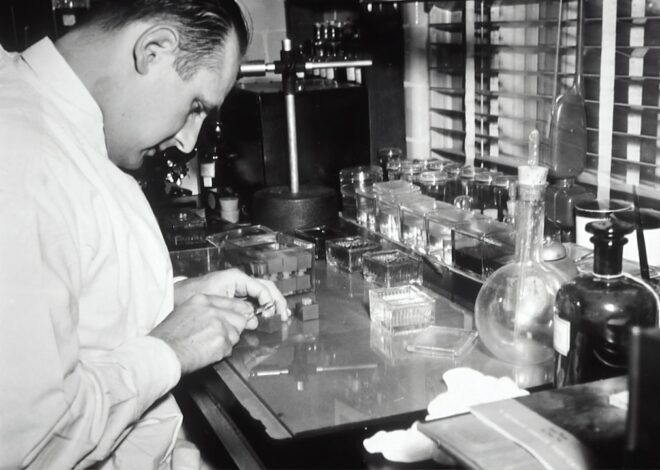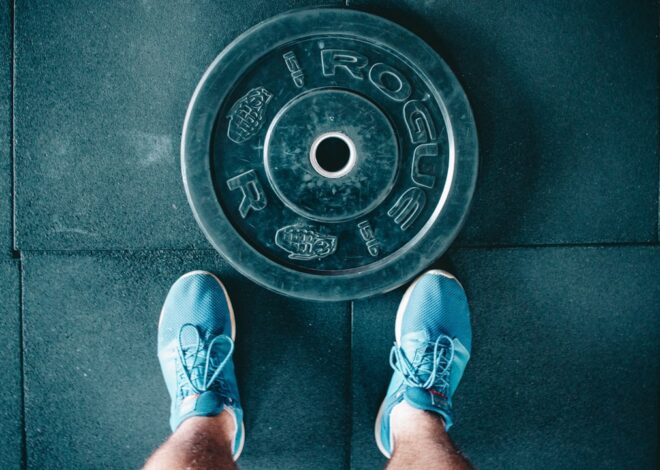
Tech-Assisted Post-Workout Healing with Muscle-Recovery Wearables
Muscle-recovery wearables have emerged as a significant innovation in the fitness and wellness industry, designed to enhance the recovery process after intense physical activity. These devices, which can range from compression garments to electrical stimulation units, are engineered to support muscle repair, reduce soreness, and improve overall athletic performance. The rise of these technologies is largely attributed to the increasing awareness of the importance of recovery in training regimens.
Athletes and fitness enthusiasts alike are recognizing that effective recovery is just as crucial as the workout itself, leading to a growing market for wearables that facilitate this process. The concept of muscle-recovery wearables is rooted in the understanding that the body requires time and support to heal after exertion. Traditional recovery methods, such as rest, hydration, and nutrition, are now being complemented by advanced technologies that provide targeted assistance.
These wearables often incorporate various features, including heat therapy, vibration, and electrical stimulation, all aimed at promoting blood flow and reducing muscle tension. As a result, users can experience quicker recovery times and enhanced performance in subsequent workouts. The integration of technology into recovery practices signifies a shift towards a more scientific approach to fitness, where data-driven insights guide personal health and performance strategies.
Key Takeaways
- Muscle-recovery wearables help track and optimize post-workout healing
- Understanding the science behind post-workout healing is crucial for effective recovery
- Tech-assisted muscle recovery offers benefits such as improved performance and reduced injury risk
- Muscle-recovery wearables work by monitoring and analyzing muscle activity and recovery
- Choosing the right muscle-recovery wearable involves considering factors like comfort and data accuracy
The Science Behind Post-Workout Healing
Post-workout healing is a complex physiological process that involves several biological mechanisms aimed at repairing muscle tissue and restoring energy levels. When muscles are subjected to stress during exercise, microscopic tears occur in the muscle fibers. This damage triggers an inflammatory response, which is essential for the healing process.
The body sends various cells to the site of injury to initiate repair, including macrophages that clear away debris and satellite cells that help regenerate muscle fibers. This intricate process is influenced by factors such as nutrition, hydration, and rest, all of which play a critical role in how effectively the body can recover. Research has shown that certain interventions can enhance this natural healing process.
For instance, the application of cold therapy can reduce inflammation and numb pain, while heat therapy can promote blood flow and relax tight muscles. Additionally, electrical stimulation has been found to activate muscle contractions, which can help maintain muscle tone during periods of inactivity. Understanding these underlying mechanisms allows developers of muscle-recovery wearables to create devices that align with the body’s natural healing processes.
By leveraging scientific principles, these technologies aim to optimize recovery times and improve overall athletic performance.
Benefits of Tech-Assisted Muscle Recovery

The benefits of tech-assisted muscle recovery are manifold, appealing to both professional athletes and casual fitness enthusiasts. One of the most significant advantages is the reduction in recovery time. By utilizing wearables that promote blood circulation and alleviate muscle soreness, users can return to their training regimens more quickly than through traditional recovery methods alone.
This is particularly beneficial for athletes who follow rigorous training schedules and cannot afford extended downtime due to soreness or injury. Moreover, muscle-recovery wearables often provide real-time feedback on muscle condition and recovery status. Many devices are equipped with sensors that monitor physiological parameters such as heart rate variability, muscle temperature, and even electrical activity in the muscles.
This data can be invaluable for tailoring recovery strategies to individual needs. For example, an athlete may discover through their wearable that they require more time for recovery after certain types of workouts or that specific recovery techniques yield better results for them personally. This personalized approach not only enhances recovery but also contributes to improved performance over time.
How Muscle-Recovery Wearables Work
| Wearable Device | Function | Metrics |
|---|---|---|
| EMG Sensors | Measure muscle activity | Electromyography (EMG) signals |
| Accelerometers | Track movement and intensity | Acceleration and motion data |
| Heart Rate Monitors | Monitor cardiovascular activity | Heart rate and heart rate variability |
| Temperature Sensors | Measure skin and muscle temperature | Temperature readings |
Muscle-recovery wearables operate through various technologies designed to facilitate healing and enhance performance. One common type is compression garments, which apply graduated pressure to the muscles. This pressure helps to improve venous return—the process by which blood returns to the heart—thereby reducing swelling and promoting faster recovery.
Compression wearables are often used by athletes during and after exercise to minimize muscle fatigue and soreness. Another category of muscle-recovery wearables includes devices that utilize electrical stimulation. These devices send low-frequency electrical impulses to the muscles, mimicking the natural signals sent by the nervous system during contraction.
This stimulation can help alleviate pain, reduce muscle tension, and promote blood flow to the affected areas. Some advanced models even allow users to customize settings based on their specific needs or preferences, providing a tailored recovery experience. Additionally, many wearables incorporate heat therapy features that can be activated pre- or post-workout to further enhance recovery by relaxing tight muscles and increasing blood flow.
Choosing the Right Muscle-Recovery Wearable for You
Selecting the appropriate muscle-recovery wearable involves considering several factors tailored to individual needs and preferences. First and foremost, it is essential to assess your specific recovery goals. Are you looking for something to alleviate soreness after intense workouts, or do you need support for chronic pain or injury rehabilitation?
Understanding your primary objectives will help narrow down your options significantly. Another critical aspect is comfort and fit. Since many wearables are designed to be worn during or after workouts, they should not impede movement or cause discomfort.
Trying on different models or reading user reviews can provide insights into how well a device performs in real-world conditions. Additionally, consider the technology incorporated into the wearable; some may offer advanced features like app connectivity for tracking progress or customizable settings for different types of workouts. Ultimately, choosing a wearable that aligns with your lifestyle and fitness routine will enhance its effectiveness in supporting your recovery journey.
Integrating Muscle-Recovery Wearables into Your Fitness Routine

Incorporating muscle-recovery wearables into a fitness routine requires thoughtful planning and consistency. To maximize their benefits, it is advisable to establish a post-workout recovery protocol that includes the use of these devices as a standard practice. For instance, after completing a workout session, an athlete might put on compression sleeves while engaging in light stretching or foam rolling.
This combination can enhance blood flow while also addressing muscle tightness. Moreover, timing plays a crucial role in the effectiveness of these wearables. Many experts recommend using them immediately after workouts when muscles are still warm and receptive to recovery interventions.
However, some devices may also be beneficial during rest days or even while sleeping, depending on their design and intended use. By integrating these wearables into various aspects of your fitness routine—whether during workouts or as part of your post-exercise regimen—you can create a comprehensive approach to muscle recovery that supports long-term athletic performance.
Tips for Maximizing the Effectiveness of Muscle-Recovery Wearables
To fully harness the potential of muscle-recovery wearables, users should adopt several best practices that enhance their effectiveness. First, consistency is key; regular use of these devices will yield better results over time compared to sporadic application. Establishing a routine that incorporates wearables into both workout sessions and recovery periods will help ensure that muscles receive continuous support.
Additionally, combining wearables with other recovery strategies can amplify their benefits. For example, incorporating proper hydration and nutrition alongside the use of compression garments or electrical stimulation devices can create a synergistic effect that promotes optimal healing. Furthermore, paying attention to body signals is crucial; if soreness persists despite using recovery wearables, it may be necessary to adjust workout intensity or seek professional advice from a healthcare provider or physical therapist.
Future Developments in Muscle-Recovery Wearable Technology
The future of muscle-recovery wearable technology holds exciting possibilities as advancements in materials science and data analytics continue to evolve. One area of development is the integration of artificial intelligence (AI) into these devices. AI could enable wearables to analyze user data more effectively, providing personalized recommendations based on individual recovery patterns and workout history.
This level of customization could revolutionize how athletes approach their training and recovery strategies. Moreover, innovations in materials could lead to more comfortable and effective designs that enhance user experience without compromising functionality. For instance, smart textiles embedded with sensors could monitor muscle activity in real-time while providing compression or heat therapy simultaneously.
As research continues to uncover new insights into muscle physiology and recovery mechanisms, we can expect muscle-recovery wearables to become increasingly sophisticated tools that not only aid in healing but also contribute significantly to overall athletic performance enhancement.
FAQs
What are muscle-recovery wearables?
Muscle-recovery wearables are devices or garments equipped with technology designed to assist in the post-workout healing process. These wearables may use features such as compression, vibration, or temperature control to aid in muscle recovery.
How do muscle-recovery wearables work?
Muscle-recovery wearables work by utilizing various technologies to promote muscle recovery after a workout. For example, compression wearables may improve blood flow, while vibration wearables may help reduce muscle soreness and fatigue.
What are the benefits of using muscle-recovery wearables?
The benefits of using muscle-recovery wearables include faster muscle recovery, reduced muscle soreness, improved circulation, and potentially enhanced athletic performance. These wearables may also help prevent injuries and aid in overall post-workout healing.
Are muscle-recovery wearables suitable for all types of workouts?
Muscle-recovery wearables can be beneficial for a wide range of workouts, including strength training, endurance exercises, and high-intensity interval training. However, individuals should consult with a healthcare professional to determine if these wearables are suitable for their specific workout routines and health conditions.
Are there any potential drawbacks to using muscle-recovery wearables?
While muscle-recovery wearables can offer benefits, there may be potential drawbacks such as cost, discomfort, or the need for regular maintenance. Additionally, individuals should ensure that they are using these wearables properly to avoid any potential negative effects on their health.

